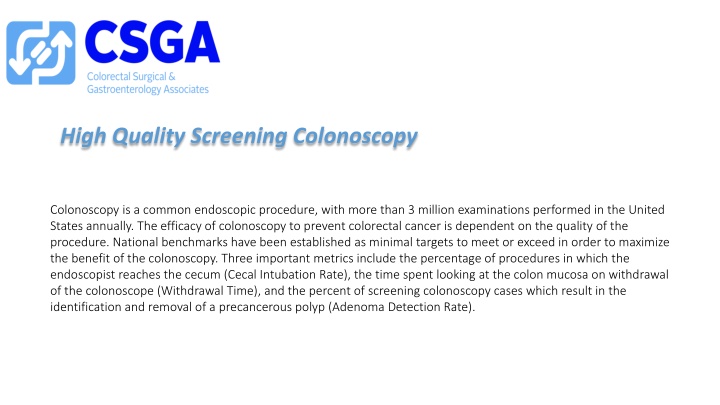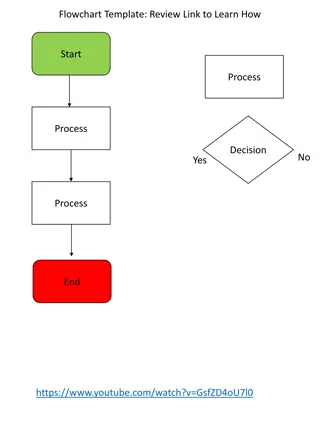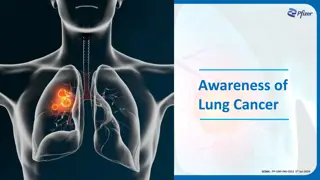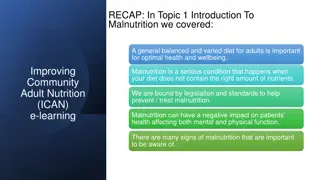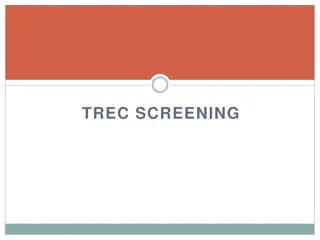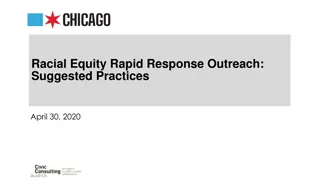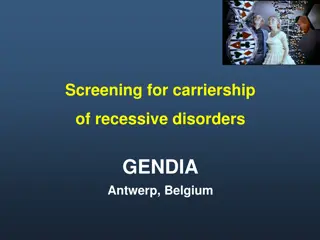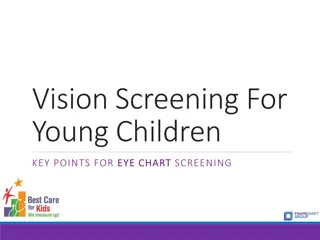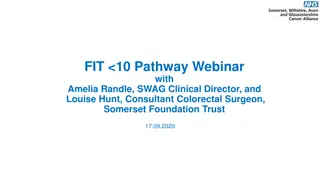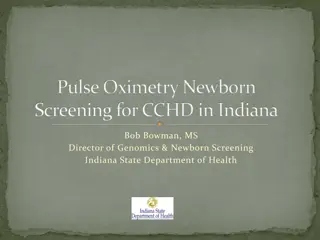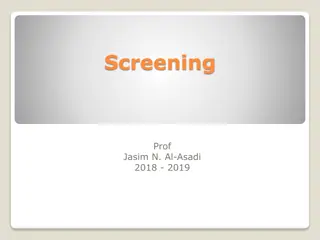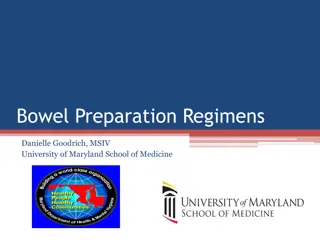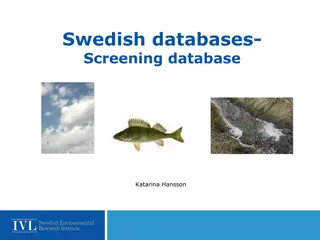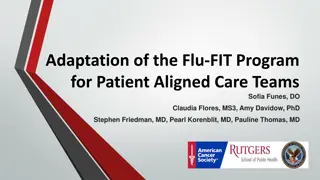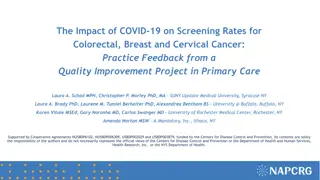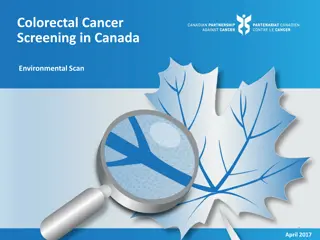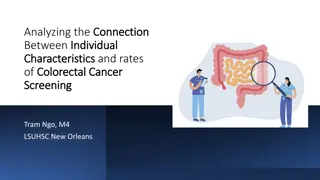High Quality Screening Colonoscopy
Colonoscopy is a crucial procedure for preventing colorectal cancer, with key benchmarks for success being cecal intubation rate, withdrawal time, and adenoma detection rate. Learn about these metrics and how they impact the effectiveness of screening colonoscopies.
Download Presentation

Please find below an Image/Link to download the presentation.
The content on the website is provided AS IS for your information and personal use only. It may not be sold, licensed, or shared on other websites without obtaining consent from the author.If you encounter any issues during the download, it is possible that the publisher has removed the file from their server.
You are allowed to download the files provided on this website for personal or commercial use, subject to the condition that they are used lawfully. All files are the property of their respective owners.
The content on the website is provided AS IS for your information and personal use only. It may not be sold, licensed, or shared on other websites without obtaining consent from the author.
E N D
Presentation Transcript
High Quality Screening Colonoscopy Colonoscopy is a common endoscopic procedure, with more than 3 million examinations performed in the United States annually. The efficacy of colonoscopy to prevent colorectal cancer is dependent on the quality of the procedure. National benchmarks have been established as minimal targets to meet or exceed in order to maximize the benefit of the colonoscopy. Three important metrics include the percentage of procedures in which the endoscopist reaches the cecum (Cecal Intubation Rate), the time spent looking at the colon mucosa on withdrawal of the colonoscope (Withdrawal Time), and the percent of screening colonoscopy cases which result in the identification and removal of a precancerous polyp (Adenoma Detection Rate).
Cecal Intubation Rate The cecum is the very beginning of your colon. It contains the appendix and a valve where the small bowel contents leave the small bowel and enter the colon. Physicians who perform colonoscopy will need to reach this area to begin the screening examination. Sometimes, reaching this area can be challenging and time consuming. A physician performing high quality colonoscopy should reach and fully evaluate this area in, at least, 95% of all screening CSGA we are reaching the cecum in 98 screening colonoscopies. This is better than the national standard of care! colonoscopies performed. At CSGA 98% % of all
98.% 100 95% 80 Cecal Intubation Rates For Screening Colonoscopy 60 PERCENT CSGA NATIONAL BENCHMARK 40 20 0 CECAL INTUBATION RATE 2016
Cecal Withrawal Time The screening examination process begins after the colonoscope has been passed through the colon and advanced into the cecum (the beginning of the colon). Once the beginning of the colon is reached the physician will slowly withdrawal the colonoscope through the colon while closely inspecting the colon s folds and lining. A physician performing high quality colonoscopy will spend an average of greater than 6 minutes inspecting the entire colon during screening examinations. The quality of the colonoscopy does not increase as a physician s cecal withdrawal time increases beyond 9 minutes. Quality of colonoscopy does decrease, however, when a physician s average cecal withdrawal time is below 6 minutes. At CSGA CSGA our average Cecal withdrawal time is 8 8. .3 3minutes. This is better than the national standard of care!
9 8.3 8 7 6.0 6 Mean Withdrawal Time For Screening Colonoscopy MINUTES 5 CSGA 4 NATIONAL BENCHMARK 3 2 1 0 WITHDRAWAL TIME 2016
Adenoma Detection Rate An adenoma is a precancerous polyp. This is a growth in the colon that can, overtime, develop into a colon cancer. This is what physicians are looking to identify and remove during your colonoscopy. The adenoma detection rate is the percentage of the time a physician performing a screening colonoscopy will identify and remove a precancerous polyp. Physicians performing high quality colonoscopy should be finding and removing adenomas in at least 30% of all male screening colonoscopies and 20% of all female screening colonoscopies. As physician s adenoma rate increases the patient s risk of developing interval colon cancer or dying from colon cancer decreases. This is to say that as a physician s adenoma detection rate goes up the patient risk of developing a colon cancer or dying from colon cancer between their first and second screening colonoscopy goes down. CSGA our adenoma detection rate is 35 35. .8 8% %. This is better than the national standard of care! At CSGA
100 80 Adenoma Detection Rate For Screening Colonoscopy 60 PERCENT CSGA NATIONAL BENCHMARK 40 35.8% 30% 20 0 ADENOMA DETECTION RATE 2016
